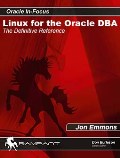Searching for Files
Even before installing additional software is started, there are
literally tens of thousands of files on a Linux system. Thankfully,
the find command can help with locating what is needed.
find command
The find commandis a very
flexible and powerful command. Later in the book it will be shown
how it can be used to search for files by age, size and many other
properties. For now, just focus on finding files by name.
The find command uses a somewhat more complicated syntax than the
other commands that you have been given so far. It first takes an
argument that specifies where to search, and then one of several
options can be given to specify what criteria to search by.
$ find ./
-name required_packages.txt
./notes/required_packages.txt
Here the -name optionis shown
that tells find to search for files with the name given. The find
command returns the location of the path to every file with that
name, but only within the specified search area. In this example,
the search area will be all directories beneath the current working
directory as noted by the ./ value.
When first starting out, it is best to limit the searches to
small areas. In the case above, it has been limited to only
searching within the current working directory.
Learning More
This book focuses on the commands that are most useful to the
Oracle DBA, but there are many more commands available and other
options that may be useful in specific circumstances. Thankfully,
help is not far away. There is a way to look up more information on
a command right at the Linux command line.
man command
The best way to learn more about a command is usually its man
page. The man command is a Linux command that searches several
locations on the system for manual pages, or documentation that is
distributed electronically with most Linux software.
To access the man page for a specific command, enter the man
commandand provide the command
you wish to learn more about as an argument.
$ man ls
LS(1) User Commands
LS(1)
NAME
ls - list directory contents
SYNOPSIS
ls [OPTION]... [FILE]...
DESCRIPTION
List information about the FILEs (the current direc-
tory by default). Sort entries alphabetically if none
of -cftuvSUX nor --sort.
Mandatory arguments to long options are mandatory for
short options too.
-a, --all
do not ignore entries starting with .
-A, --almost-all
do not list implied . and ..
--author
with -l, print the author of each file
-b, --escape
print octal escapes for nongraphic characters
...
The man pages are typically displayed on the screen in
the less file viewer, very similar to more, in which the arrow keys
can be used to navigate, or ‘space’ used to move a page down and ‘b’
to move a page up. The man pages are typically displayed in the
format shown above. First, there is the command name with a short
description, then a synopsis that shows the order of options and
arguments that can be used with this command.
Next is a more detailed description of the command followed by
all the valid options for the given command. It is not unusual for
a command to have dozens of options. This can be quite overwhelming
at first, but the more these commands are used, the more comfortable
one will become with their options.
Knowing how to read and interpret the man pages is essential to
learning about commands, but without a firm foundation they will
have little meaning. Hopefully, at this point parts of the man
pages are better understood, and by the end of the next chapter,
most of what the man pages have to offer should also be understood.
whatis and info commands
Two other commands that give information about other commands are
whatis and info. Both accept an argument much like the man command.
The whatis commandprints just
a short description of the command in question.
$ whatis ls
ls (1) - list
directory contents
ls (1p) - list directory contents
The whatis command is dependent on a database which
has to occasionally be rebuilt to include new software, but as can
be seen in the output above, it offers a nice succinct description.
The info commandis similar to
man but uses a different set of files to display command
documentation.
$ info
mkdir
12.3 `mkdir': Make directories
==============================
`mkdir' creates directories with the
specified names. Synopsis:
mkdir [OPTION]... NAME...
If a NAME is an existing file but not a directory, `mkdir' prints
a warning message on stderr (standard error) and exits with a status
of 1 after processing any remaining NAMEs. The same is done when a
NAME is an existing directory and the -p option is not given. If a
NAME is an existing directory and the -p option is given, `mkdir'
ignores it. That is, `mkdir' does not print a warning, raise an
error, or change the mode of the directory, even if the -m option is
given, and will move on to processing any remaining NAMEs.
The program accepts the following options. Also see *Note
Common options:
`-m MODE'
`--mode=MODE'
Set the mode of created directories to MODE, which is symbolic as in
chmod and uses a=rwx (read, write and execute allowed for everyone)
for the point of the departure.
Most commands have more documentation in the man page than is
available in info, but there are occasional exceptions, so it is
worth keeping info in mind. Unlike the man and whatis commands,
info can be called without any arguments. That displays a list of
commands for which info pages are available.
|
|
 |
|
Get the Complete Details on
Linux System Management for Oracle DBAs
The landmark book
"Linux for the Oracle DBA: The
Definitive Reference"
provides comprehensive yet specific
knowledge on administering Oracle on Linux. A
must-have reference for every DBA running or planning to run
Oracle on a Linux platform.
Buy it
for 30% off directly from the publisher.
|
|
|
| |
|
Burleson is the American Team

Note:
This Oracle
documentation was created as a support and Oracle training reference for use by our
DBA performance tuning consulting professionals.
Feel free to ask questions on our
Oracle forum.
Verify
experience!
Anyone
considering using the services of an Oracle support expert should
independently investigate their credentials and experience, and not rely on
advertisements and self-proclaimed expertise. All legitimate Oracle experts
publish
their Oracle
qualifications.
Errata?
Oracle technology is changing and we
strive to update our BC Oracle support information. If you find an error
or have a suggestion for improving our content, we would appreciate your
feedback. Just
e-mail:
 and include the URL for the page. and include the URL for the page.


Copyright © 1996 - 2017
All rights reserved by
Burleson
Oracle ®
is the registered trademark of Oracle Corporation.
Remote Emergency Support provided by
Conversational
|
|
